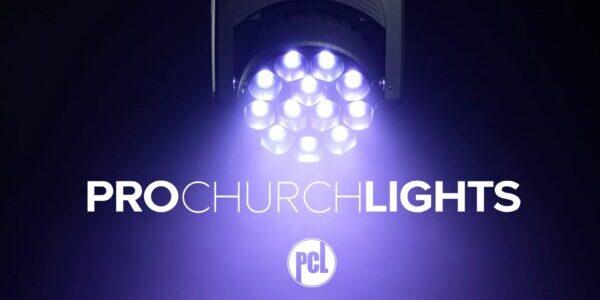What exactly is DMX? In this article, Duke DeJong demystifies those three little letters and hows how they assist us in lighting design.
By now, most people involved in church tech have seen these three little letters (DMX) and know they are the key to controlling your lights. But I find that’s often all people know about it. We’re going to change that today.
Digital Multiplex
In the early years of lighting, proprietary communication protocols were pretty much the only way to talk to your dimmer racks from your lighting console. Every one had its own language, which as you can imagine, made it really hard to mix and match gear without an “interpreter”. While there were some interpreting pieces of gear out there, it wasn’t until 1986 when the Engineering Commission of United States Institute for Theatre Technology (USITT) created Digital Multiplex, or DMX for short. Driven by the emergence of new “intelligent lights” and the desire to have different brands play nicely with each other, we finally had a standard language for all lighting things to speak.
But What Is DMX?
DMX communicates 512 channels of information to everything it is connected to. Every channel is communicating a simple value somewhere between 0 and 255 which we often convert to a percentage of 0-100%. It is a pipeline of information and everything connected to a universe of DMX can pull from all 512 channels. We tell a fixture or dimmer rack what channels we want it to listen to by addressing the fixture/dimmer.
For example, if you have a 4 channel dimmer pack addressed to channel 1, it will look for the values on channels 1-4 and provide power to the fixtures plugged in at the value you’ve sent it. An LED fixture in 4 channel mode (Red, Green, Blue, Intensity) addressed to channel 101 will see a value for Red in channel 101, Green in 102, Blue in 103, and overall intensity in 104.
You tell any given fixture or dimmer which channels it should take its values from and it will, simple as that. DMX travels to fixtures or dimmers via DMX cable, which has 120 ohm resistance (as opposed to microphone cable which has 75 ohm resistance) and uses either 3-pin or 5-pin XLR connectors.
The Remote Control
So if DMX is just a conduit of information, what generates those values for each of the 512 channels? Your lighting console handles that job. It serves as a highly sophisticated universal remote.
You know those remotes where you select an input and then the remote changes the values for the functions that piece of gear has (like channel, volume, menu settings, etc.)? A lighting controller works the same way, except it simply says, “OK input 1, 255. Input 2, 128. Input 3, 0.” It does this for all 512 channels constantly, updating the values it sends as you tell it to. And if a fixture has multiple channels of information, it’s just like having more features available on the remote for that source.
Practical Applications
One of the beautiful things about DMX is that you can hook up your fixtures in any order and, as long as they are all addressed properly, they’ll all get the values they are looking for. DMX is meant to be daisy chained, though it’s recommended that you don’t daisy chain more than 30 fixtures together. If you have more than 30 fixtures or your fixtures are spread out so far that daisy chaining them isn’t practical, you can buy an opti splitter to distribute DMX safely and completely to all of your fixtures.
It’s also highly recommended that you terminate your DMX line with DMX terminator. DMX moves information at a high speed, so it’s critical to give it the best signal path possible—free from interference and the possibility of getting bogged down. Too many fixtures on one chain, not having your line terminated, and using microphone cable instead of DMX are all things that can cause interference in your communication. That can result in lights doing interesting things. Those fixtures then are still receiving communication; it’s just not always the right communication.
Hopefully that clears up any questions or confusion that revolves around DMX for you. It’s really as simple as being a conduit of 512 channels of information, and it’s a critical component to making your lighting systems work. Use it correctly, and you will have the power and control to do great things with your lighting
Duke is passionate about equipping the next generation of ministry leaders, especially those serving churches with technology. He serves as Church Relations Director for CCI Solutions, a design build technology solutions provider. Follow Duke on Twitter: @dukedejong










Hi – useful article introducing the often misunderstood world of DMX!
It’s not strictly true to say “[DMX] has 120 ohm resistance (as opposed to microphone cable which has 75 ohm resistance)” – to be accurate, the term is “impedance” which although seemingly unimportant is useful to know if someone thinks they can tell the difference between two cables using a digital multi-meter set to ohms! (Both DMX and microphone cables have resistances of a few 10’s of ohms per kilometer!). Analogue mic cables have very varied impedances and AES/EBU digital cables are typically 110 ohm.
The decision taken long ago to use “ohms” for both resistance and impedance was a bit unfortunate, and does lead to some confusion!
Although you can “get away” with using mic cables for DMX, as you say, this can often lead to problems (especially if the user mixes cable types). I think one of the greatest innovations in DMX has been the introduction of wireless connectivity, which although it introduces some new problems, resolves the issues of cables completely (and speeds up rig/derig times!)